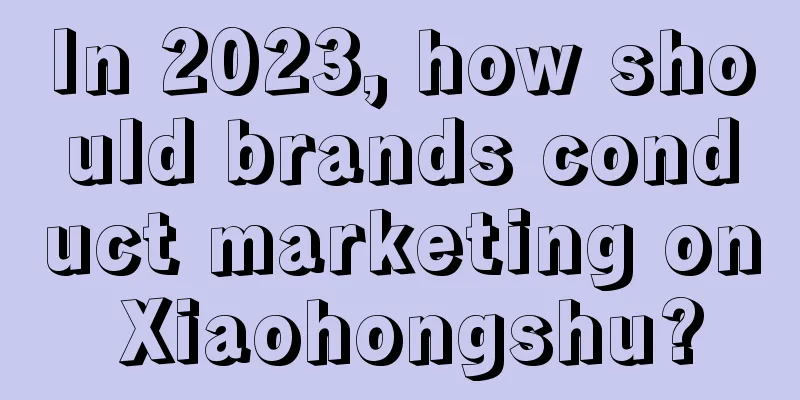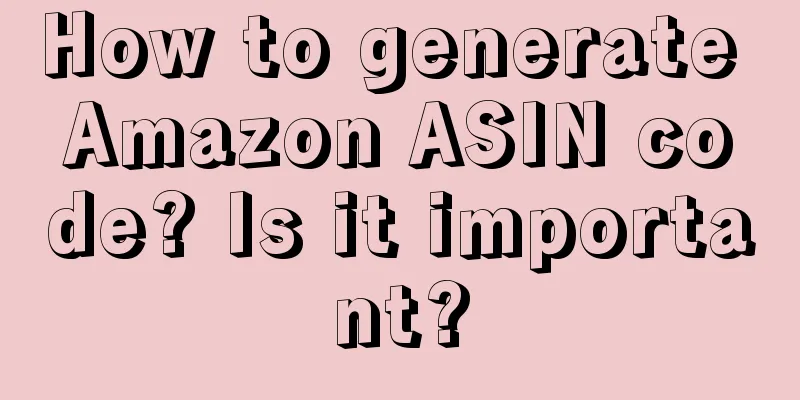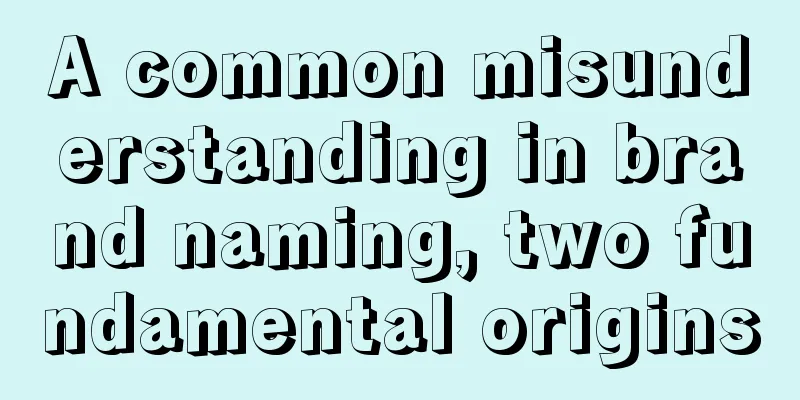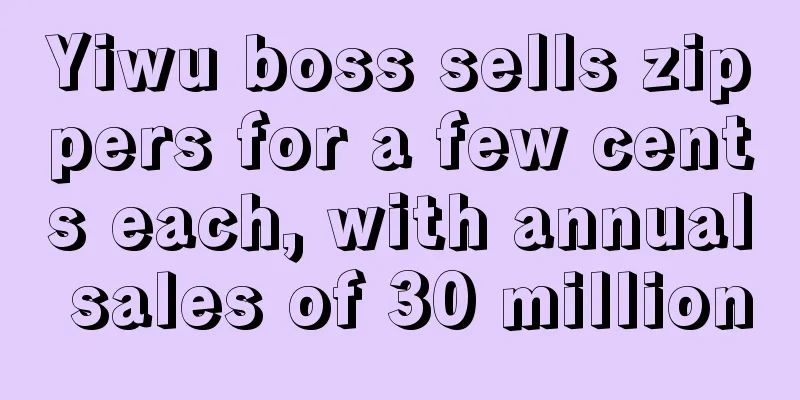In 2023, how should brands conduct marketing on Xiaohongshu?

Many brands have probably also felt that the strategy that allowed them to generate GMV a year ago has become increasingly difficult recently, and they are even starting to spend more than they earn. The market environment is constantly changing. Perfect Diary, which became famous a few years ago, may not be able to succeed today with the same strategy. It’s not entirely because traffic has become more expensive, but because our way of playing needs to be updated! Today I would like to share with you what changes will occur in the market environment regarding the content promotion on Xiaohongshu in 2023, and what we should do to respond. Bold emphasis: The views shared this time are highly subjective, purely manual output, and not the product of AI. 1. From placing an order based on a search to placing an order based on a searchIn the past, Xiaohongshu’s conversion path was “see – be inspired – place an order”. When users browse Xiaohongshu, they see our content and are attracted to it, so they go to Tmall or other e-commerce platforms to place orders. This completes the entire harvesting process. But now users have too many choices. There are hundreds or even thousands of alternatives for the same demand. Even products that are exactly the same but with a different color in some details can make them hesitate. In addition, users are becoming more and more discerning about advertisements, and their trust in bloggers’ recommendations has also declined, so careful selection is inevitable. Nowadays, except for some low-priced fast-moving consumer goods, it is difficult to achieve conversion in just one step. Therefore, the user's harvesting path becomes "see - interest - search again - be inspired/compare - place an order". The entire line was stretched. After seeing the content we put out, they became interested in us, and then searched for us to see more user feedback and gain a deeper understanding of whether we meet their needs or expectations. During this process, he may be truly impressed and tempted to buy a product, or he may compare it with other brands and ultimately come to a conclusion and decide whether to place an order or give up. This forms a complete path for a user. Therefore, in this year's promotion, we are required to be more patient with the results and plan the content more meticulously. How to do it? Read on! 2. From being recommended to being rememberedAs I just said, most users will not place an order as soon as they see a product while browsing. Instead, they will search and compare and gain a deeper understanding before placing an order. But this process does not necessarily happen immediately and continuously. That is to say, they probably won’t search and place an order right away when they see you for the first time. It’s not an instantaneous action. Therefore, in order to cope with this time difference, we have a deeper requirement for the purpose of reaching our content - to be remembered by them. No matter where they are, whether it is the discovery page or the search page, as long as they see us, we need to give them a point to remember us, so that when they want to search or find us, they can quickly extract us from their memory and find us through this point. This point can be a brand word, provided that our brand word is very easy to remember or has a certain degree of popularity, or it can be a certain feature, such as appearance, color, function, effect, etc. For example, McDonald’s hamburger cat bed. Even if I forget what brand it is, whether it is KFC or Burger King, I remember that the cat bed looks like a hamburger, and I can find it by searching for hamburger cat bed. This feature is not necessarily related to the product function, but it is the most memorable one for users, and we need to strengthen it in the content. Whether or not a brand can be remembered will be the focus for brands to improve conversion rates and audience coverage. 3. From Category Demand to Usage ScenarioI have always emphasized the role of search on Xiaohongshu. Although most of Xiaohongshu's traffic is concentrated on the discovery page, from the perspective of conversion ports, more than 60% of consumption occurs on the search page. Why does this happen? In addition to what I just said, the user's conversion path has changed, there is another very important factor - reading purpose. What does it mean? Xiaohongshu is a content-based community, and although it plays the role of promoting products, it is still a community in the final analysis. This means that when users browse, they are more interested in leisure and entertainment, and want to see other people's lives and the latest news. In this case, their psychological demands are [to understand] and [to wait and see] rather than [to shop]. There is no clear purpose. Even if they see the bloggers’ favorite items in the content, they are more likely to think “I get it” instead of immediately switching to “I want to buy it too”, unless they already have a need for this product and are looking for related products. But it is completely different on the search page. Users know clearly what they want to know and what they want. Whether it is a strategy, a review, or a certain product or brand, their purpose is very clear. Therefore, we must not ignore the reach of the search page. A detailed layout of this part can enable us to achieve conversions more efficiently. Having explained so much, let’s get back to our title – from category to demand scenario. Does it have anything to do with what I just explained? In our previous campaigns, we paid more attention to brand and category search terms. Let me take the brand Wang Baobao as an example. When we deliver content on a daily basis, no matter what the content is, in addition to the interaction of a single note, we pay most attention to the brand word Wang Baobao, or the word Wang Baobao cereal, and how much product-related content can be searched. This means that the more discussion we have on Xiaohongshu, the more content users can see. This is not wrong. Content performance in the brand search area is indeed important for improving our conversion rate, but it is too narrow. When users search for brand words, it means that they already have a certain level of knowledge and interest in us, which is what we call precise brand potential users. Based on what we just said, users are purpose-oriented on the search page. If we want to expand the user base, we need to grasp more than just the brand's potential users on the search side. We must also not be satisfied with relying solely on system push to reach new users. It is much more efficient to promote products in the area where users already have clear needs than to promote products in the area of interest reading! Therefore, our layout on the search side should extend from brand/category to user needs and usage scenarios. For example, let’s take Wang Baobao cereal as an example. The user’s needs may be fat loss and meal replacement, and the usage scenarios may be breakfast, afternoon tea, filling hunger after overtime work, midnight snack, fitness, etc. In addition to [Wang Baobao cereal], we also need to pay attention to the content performance of Wang Baobao cereal under these needs and scenario searches. Whether users can see us, what our presentation is like, etc., thereby improving our content conversion rate. 4. From single-item promotion to two-way interactionMore and more corporate accounts have begun to build their own personalities, which shows that everyone has realized the importance of emotional connections with consumers. As a brand, especially a developing brand, it is not feasible to remain aloof and mysterious on Xiaohongshu. But what we overlook is that the interaction occurs between users and brands, not between users and brand accounts. What does it mean? The reason why we consciously add personality and interactive content when operating brand accounts is because brand accounts represent the brand, but brand accounts are not the only things that can represent a brand. Every time we implant content, product exposure, user experience and even after-sales maintenance, they are all part of the brand. Our sense of interaction and communication with users need to appear at every stage, that is, every time they are seen by users. At the same time, based on the original social positioning of the Xiaohongshu platform, the readability of the content is far more important than what we call the power of promoting content. Some friends may think that I post on Xiaohongshu just to plant grass, and content that does not have the power to plant grass will have no effect on me. First of all, readability > grass-roots power, which does not mean that we can ignore the improvement of grass-roots power, but reminds us that while emphasizing grass-roots power, we should spend more energy to take into account the reading experience of the content. It is not a multiple-choice question, but an addition and progression. In addition, how much traffic can Xiaohongshu, a social-based platform, have if users are unwilling to read content that has no interaction? If you just want to advertise, then I suggest you go directly to the opening screen, TV ads, elevator ads, etc. These are enough for you to choose, but the content of Xiaohongshu is definitely not a place to advertise directly! How to judge the reading experience of a single note? It's very simple. Just pick a girl from the milk tea shop, coffee shop or convenience store downstairs from your company and see if she can finish reading your content. Readability will not be completely lost just because the person is not our target user, unless our product is targeted at a relatively niche group of users who have specific interests or hobbies, or have specific identity labels. For example, if you ask a 20-year-old girl why she can't finish reading a maternity bag checklist for new mothers, she certainly won't finish reading it and doesn't want to read it, because her current status does not require it at all. For most products, whether the user is your conversion user will not be affected. For example, Pop Mart, or certain IP vertical peripheral products, or even niche hobby areas such as colored ink. Even if they are not consumers in this field at all, when they see the content, they will have similar thoughts as “Wow, so cute, I’ll check it out and learn more about it.” They can resonate with our content and have a desire to read. This resonance is readability! As for the direction of content optimization, you can draw conclusions from her feedback on "why she couldn't continue reading". Transitioning to the brand, overall readability is also very important, which is what we call the content that appears on the brand word search page. It's like a person walking on the street. From a distance, he has two eyes and a nose. But when you get closer and walk around him, you can still only see that he has two eyes and a nose. Then my action of getting closer and trying to understand him is completely ineffective. The same is true for brands, such as this one. The content under the search terms is all the same, just different bloggers saying the same thing, completely copy and paste, I can know what he said without clicking in. If it does not provide users with more references and inspiration, then this search action is meaningless to them. At the same time, he will not be able to achieve his goal of searching for more content related to you and deciding whether to buy it, so there is a high probability that he will directly pass it. 5. From reading to watchingWe have always said that products with good looks are more popular on Xiaohongshu. Because people, especially women, are visual users. We tend to capture memories and heartbeats through vision. Similarly, this also applies to the presentation of selling points. Statistically speaking, cosmetics are easier to plant and harvest than skin care products. Why? For example, for blush and eye shadow, you can quickly get the benefits that the product brings to me through pictures and videos, that is, the product's selling point, what color it is, what skin type it is suitable for, what effect it will have when applied, etc., but this is not the case with skin care products. You cannot get the selling points of the product and the real feedback that can be brought to "me" from the process of a blogger using lotion or the appearance of a bottle of essence, such as whether it makes the skin whiter or better, less greasy or more suitable for sensitive skin, etc., even if the blogger posts comparison pictures before and after using it for a period of time. If we look at these selling points, and express them in words, they are - [I have sensitive skin, but this really feels super gentle when using it], [This blush really only needs one sweep, the color isn't heavy, and it's very friendly to people with clumsy hands]. I found nothing, very tired. There is no sense of picture and no impact. For users, the psychological feedback is "I get it." You write 500 words in a very eloquent manner, thinking that you have described every advantage clearly, but the user does not have the patience to read the whole thing, and after reading it, he does not feel any emotion. The effect of pictures and videos is [Wow, so this is what it is]. The difference in perception determines whether users can quickly match our needs with theirs and stimulate impulse consumption. This is how visual selling points promote conversion. Therefore, whether it is the selection and presentation of selling points or the optimization of content, we must focus our energy on what is most likely to give users a sense of impact and enable them to quickly remember and vividly perceive our direction. This direction may not be the core advantage of our products. [Advantage Visualization] will be the focus of our subsequent content optimization and product presentation. In general, the essence of marketing is to cater to people's consumption behavior. If we just take it for granted and stick to our old ways from the perspective of the brand itself without thinking about what they need, no matter how much we do, it will only be self-satisfaction, and we will not get the returns we expect! Author: Bobo, public account: Bobo's cooking class |
<<: Major coffee brands have entered the Douyin group buying market
>>: Is it feasible to use AI digital people to shoot Douyin?
Recommend
How long does it take to list products after the Amazon store is launched? How many days do I have to wait?
Many people are also curious about how long it wil...
From being neglected to selling out online, why is it White Elephant?
According to relevant data, among all brands of in...
Is it easy to do business on Amazon Japan? What changes have taken place?
If you want to open a store on Amazon's cross-...
How to go from Made in China to Chinese brands?
The article explores in depth how Chinese brands h...
Jindian Milk, one million users participated in 10 days, global membership marketing case analysis
Milk is a product with low unit price and high rep...
Can cross-border e-commerce sell medicines? What qualifications are required for cross-border e-commerce to sell medicines?
Cross-border e-commerce has become part of global ...
What should I do if I have no transaction volume after registering on Shopee? How to solve this situation?
Speaking of settling in Shopee, I believe that fri...
High-customer-per-bike company|Operational methodology for the entire user life cycle
The combing of the user's entire life cycle is...
Xiaohongshu’s traffic rules have changed dramatically, and new rules for business notes have been launched
The traffic rules of Xiaohongshu platform have und...
What does shopeesip mean? What is its function?
Many seller friends are registering and opening st...
What is the “optimal solution” for selling ice cream?
As the weather gets hotter, cooling products such ...
After transforming into selling goods, can Xin Jifei still have "technology and hard work"?
Xin Jifei, who became popular last year for his ph...
After publishing the Xiaohongshu notes, how to activate the system's multiple pushes!
On the Xiaohongshu platform, many businesses are f...
How long does it take for Amazon FBA to enter the warehouse? What should I do if the warehouse is out of stock?
Amazon is a very fair platform, which is also one ...
The longest Double 11 in history, the e-commerce war enters a new stage
This year's Double 11 Shopping Festival not on...



![[Million Summary] Private domain circle of friends operation that is valued by WeChat business but ignored by you](/upload/images/67e77c7d97e35.webp)





